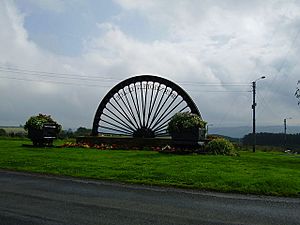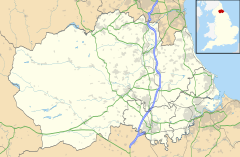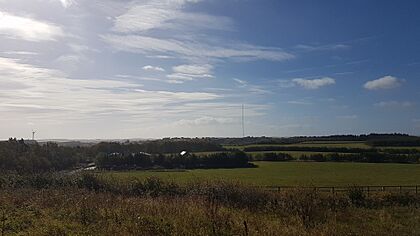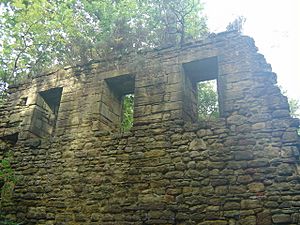Burnhope facts for kids
Quick facts for kids Burnhope |
|
|---|---|
 Coal chauldrons and pit wheel sculpture at Burnhope. (Opened by MP Hilary Armstrong and two of the local school children, Mark Gray and Kerry Pinnington) |
|
| Population | 1,564 (2011) |
| OS grid reference | NZ187482 |
| Unitary authority | |
| Ceremonial county | |
| Region | |
| Country | England |
| Sovereign state | United Kingdom |
| Post town | DURHAM |
| Postcode district | DH7 |
| Dialling code | 01207 |
| Police | Durham |
| Fire | County Durham and Darlington |
| Ambulance | North East |
| EU Parliament | North East England |
| UK Parliament | |
Burnhope is a small village and civil parish located in County Durham, England. It's nestled in the Craghead valley, across from the town of Stanley. In 2011, about 1,564 people lived there.
Burnhope looks out over Lanchester in the beautiful Browney Valley, about two miles to the west. Maiden Law is two miles north, and Holmside is about two miles to the south-east.
Contents
Exploring Burnhope Village
Burnhope is a village with a mix of people. It's even home to the famous children's author, Terry Deary!
In 2003, two tall wind turbines were built in a field between Burnhope and nearby Craghead. These turbines became a new landmark, joining the existing large transmission mast.
A Special Miners' Gala
Burnhope holds a unique place in history for the Durham Miners' Gala. This huge annual event, which celebrates mining heritage, is usually held in Durham. However, in 1926, during the General Strike, the Gala was not allowed in Durham. So, it was moved to Burnhope instead!
In 1986, a special 60th anniversary event was held in Burnhope to remember this important moment.
School and Growth
In 1921, the local school was run by William Jacques Warwick. His wife, Emmeline, taught in the Infants Department.
Burnhope has grown quite a lot recently. Over 120 new homes have been built by a developer called Keepmoat Homes.
History of Langley Hall
About two miles south-east of Burnhope, you can find the ruins of Langley Hall. This was once a fortified manor house built in the 1500s. It was made for Henry Scrope, 7th Baron Scrope of Bolton.
The hall likely had three parts built around a central courtyard, and it was surrounded by a moat for protection. After Henry Scrope passed away, the estate stayed in his family for many years.
Eventually, it belonged to Emanuel Scrope, 1st Earl of Sunderland. When Emanuel died in 1630, Langley Hall and its lands began to fall apart. Today, only ruins remain.




